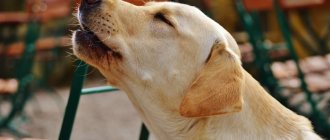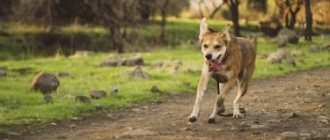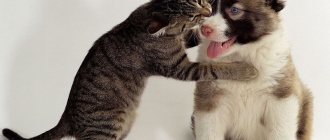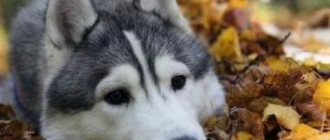Home » Useful Information
My husband and I have long dreamed of having a dog and are finally ready for this important step. We immediately decided that we didn’t want any newfangled purebred animals. We'd rather give a home and care to an ordinary shelter mongrel. But in our cramped apartment it would be difficult to keep a large dog, so it was important for us to take a small dog. We greatly puzzled the shelter volunteers with our desire. The fact is that animals usually come to them one by one. And without seeing the parents, it is difficult to say how a mongrel puppy will grow up.
Monitor your weight every week
If possible, weigh the puppy at the end of the week for a month and calculate the average gain. Typically, in a week, a puppy who eats properly according to the schedule will gain 250 g. Multiply this value by 52 weeks and add to the current weight. Get the approximate weight of a one-year-old dog. Large dogs can gain a kilogram per week, so at the end of the year you will get at least 52 kg of happiness.
Also watch your appetite. All puppies are constantly hungry, but if your little one eats a meal instantly, looks forward to the next meal, and quickly gains weight, expect a large dog in the future.
Weight of medium breed puppies
Medium breed puppies typically reach 99% of an adult dog's weight by nine to ten months of age.
In general, the average category consists of breeds that weigh between 10 and 20 kg.
There is some overlap with small breed size at the lower end of this scale and large dogs at the upper end.
Medium breed puppies consist of, but are not limited to: Border Collie, Bulldog, Cocker Spaniel, Corgi, English Springer Spaniel and Whippet .
Weight of medium breed puppies by month - table
For a dog that falls into the "medium" size category, you can use the month-by-month weight chart below to determine how much your puppy will weigh when fully grown. You can also see how much he will weigh at each stage, such as 12 weeks, 16 weeks, 6 months, 8 months and the like.
Mongrel dog
It is impossible to say where exactly this ancient mongrel race of dogs came from. There have always been mongrels, especially in villages where mongrels were taken simply from a bitch who was famous for serving her master well. If a landowner bred some kind of breed on his estate for grazing, hunting or guarding, then the common people simply had dogs and rarely of any specific breed. At the same time, you should not confuse interbreed mestizos with dogs without a history. The first are the result of the owner's oversight, and the mongrel - these dogs have always been there and it is doubtful that they will ever disappear.
Pay attention to proportions
In childhood, all dogs are clumsy and bear little resemblance to strong adult dogs. However, even in infancy, potential is visible in body proportions. Puppies with a large head and a small body, with a wide chest and massive pelvis, and disproportionately powerful paws, are likely to grow large. If the head is proportional to the chest and pelvis, the result will be an average dog. Small ones already in childhood have a body folded like that of an adult dog. The changes will be minor in the shape of the ears and muzzle, but, in general, the dog will remain the same.
Appearance
If when describing any breed registered with the FCI you should start with a distinctive exterior, then for a mongrel this concept is very abstract. In each region of the world, in each city, the mongrel's habitat may have its own characteristics. But most often this is a dog of average height, about 40-50 centimeters at the withers.
The fact is that very small dogs are more vulnerable in the city, and very large ones simply do not survive, since a large body is difficult to feed. The rare mongrel dog also has thick and long hair. The presence of undercoat is recorded in the majority, but Mother Nature also does not guarantee its presence in a puppy. In warm regions such dogs survive, but in the northern regions they simply do not exist.
By the nature of the body, most often all mongrels are lean, with long limbs and strong muscles. But this is again due to the fact that a strong dog will most likely be able to support itself without an owner, but weak individuals die in the first year of life.
Mutts have a wide variety of colors, but most often they are dark dogs with tan marks. It is a rare case when there are white mongrels or rare delicate colors.
Of course, if an unplanned mating with a purebred dog occurs, the puppies will have obvious pedigree characteristics, but after a few litters all the features are blurred and it is almost impossible to trace what kind of pedigree blood is walking in the veins of the dog. Remember, in the story by M.A. Bulgakov, Sharik, looking in the mirror, begins to talk about his lot and comes to the conclusion that he is so handsome because his grandmother sinned with a diver.
Health, nutrition and care
In matters of dog health sustainability, mongrels can give a head start to almost any breed. This is primarily due to the fact that outbred dogs experienced the full power of natural selection. A puppy with defects, complications or congenital diseases simply will not survive. Yes, of course, completely ownerless dogs can catch an infectious disease during their lives, get injured, or acquire a bouquet of parasites, but such dogs tolerate all diseases more easily.
But if a mongrel ends up in a caring family, where the vaccination schedule is followed and the dog’s health is monitored, then it can be considered practically invulnerable. It is also impossible to say exactly how long mongrel dogs live, because stray dogs in the city do not survive 6 years, but at home the age can exceed 18, but again it all depends on the dog’s heredity, which is often simply impossible to trace.
Hygiene and care for a mongrel dog are standard: eyes, ears, teeth are checked and cleaned once a week; claws are trimmed as they grow, and combing is done according to the type of coat. The suitability of living in an apartment or in a yard should also be determined only based on the characteristics of a particular dog. There are self-sufficient individuals who are calmly ready to wait for their owner from work, having fun with their own toys, and there are mischief-makers whose enthusiasm would be the envy of bored huskies or Jack Russell terriers.
When it comes to nutrition, most mongrels are not picky. This does not mean at all that they can be fed from the master’s table, and the fish cannot be boned. Any dog is not allowed sweets, pastries, bread, tubular bones, smoked foods, spicy and salty foods. Vitamin supplements are just as important as for purebred dogs. Alas, allergies also occur in mongrel dogs, so it is better to give hypoallergenic dry food, and if you use a natural type of feeding, then avoid citrus fruits and out-of-season vegetables.
Weight of large breed puppies
Large breed puppies take at least a year to eighteen months to reach their full adult weight.
In general, the large breed category consists of breeds between 20 and 45 kg, but there is some overlap between medium sized breeds at the lower end of this scale and giant sized dogs at the upper end.
Large breed dogs consist of, but are not limited to: Alaskan Malamute, Boxer, Bloodhound, Doberman Pinscher, German Shepherd, Golden Retriever and Labrador Retriever .
To predict the weight of a large breed puppy at full growth, you can use the chart below to get a rough idea based on his current weight.
Weight of large breed puppies by month - table
3rd month of a puppy’s life – food
There are commercial foods available on the market for certain age categories and even for certain breeds of puppies. If we have made this decision, then - as long as we trust the manufacturer of the food, and the veterinarian who is caring for the dog does not recommend otherwise - we do not need to add anything to it. During this period, it is worth investing in food from the top, or at least “upper-middle” shelf.
If we decide to cook our own food, remember that a growing body requires a lot of protein and minerals. Puppies of giant and... miniature breeds require a particularly careful approach in this matter. It should be remembered that overuse of supplements can be just as dangerous as late delivery of an important component: a vitamin or mineral. A veterinarian's consultation is required here.
We, of course, cannot play with a constant change of food: for two days the dog receives food from one company, for the next three days - boiled food, and then we offer him ready-made food, but from a completely different manufacturer.
At the age of three months, our pupil eats four times a day, but we are already preparing him for adulthood, and when he turns three months, we can limit himself to three meals.
© shutterstock
How to distinguish a German Shepherd puppy from a mongrel
It is difficult for novice dog breeders to distinguish between ordinary mongrels and purebred dogs. The situation is further complicated by the fact that there are no standards for the unrecognized mongrel breed, and therefore it is impossible to determine them by size, color and other characteristics. To understand whether a breeder is advertising a purebred German Shepherd puppy or whether it is a mongrel, you need criteria by which it is not difficult to distinguish them. Chief among them:
- Compared to a mongrel, a German Shepherd puppy grows and gains weight quickly after birth.
- Germans have a proportional, harmonious physique; mongrels rarely boast of being slim.
- Pedigree dogs have a narrow, but convex forehead; mongrels have a furrow.
- The tail of German Shepherds is lowered and shaped like a saber; in mongrels it is curled into a ring.
- Purebred Germans have a strong, massive sternum; a barrel-shaped chest is found only in mongrels.
- The coat of shepherd dogs is coarse and hard, while that of mongrels is soft.
- After eight weeks, the eyes of Germans are dark, not protruding; in mongrels they can have different colors and shapes.
- The nose of German Shepherds is larger than that of mongrels.
- The ears of mongrels in most cases are drooping, which is unacceptable for purebred Germans.
Upon careful examination, even in mongrels that are very similar to German Shepherd puppies, you can find differences that make it easy to identify a substitution.











